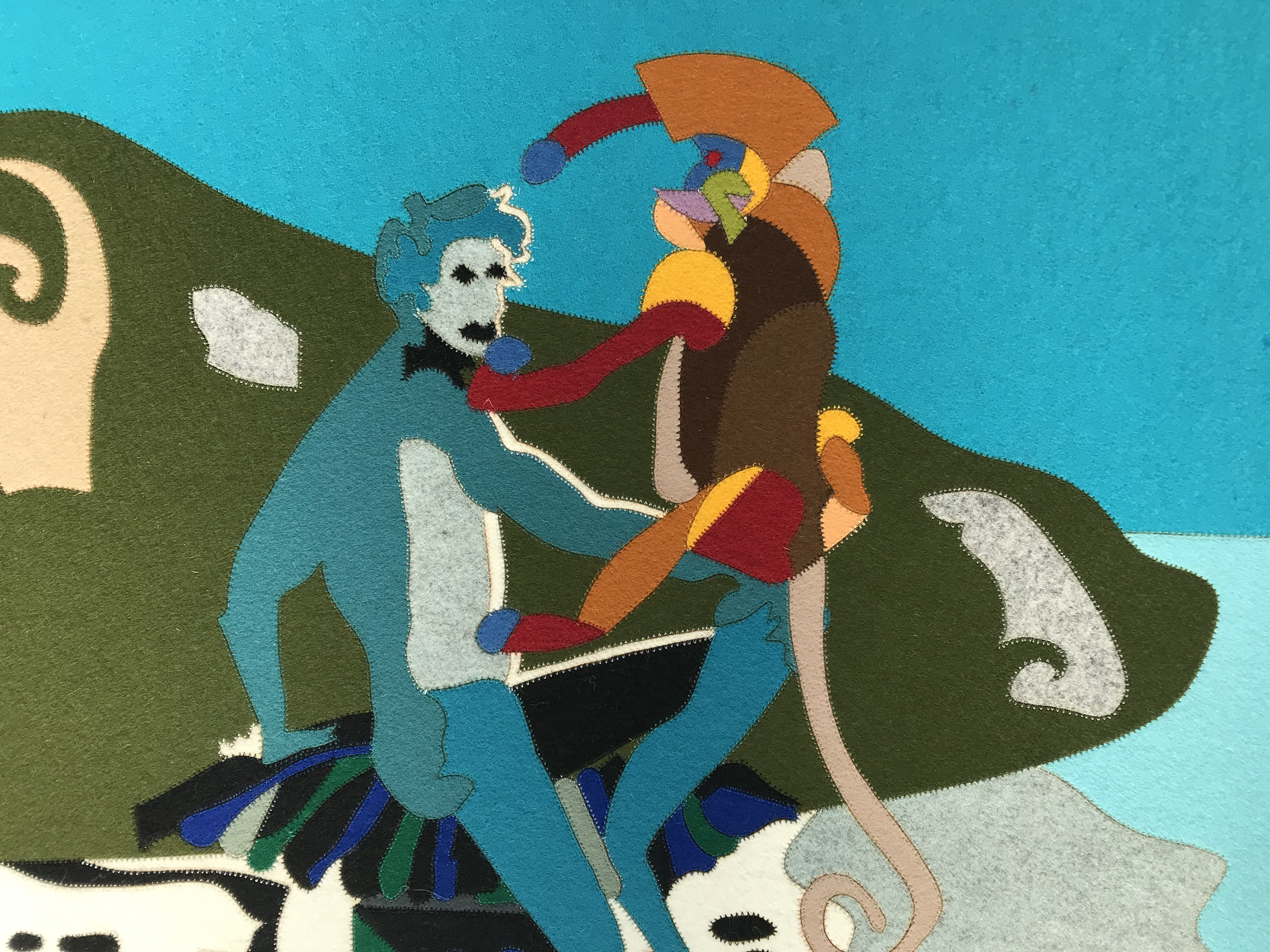L’Isola dei Baci (Disappearing Acts).
April 3–June 20, 2019
Open Studio #01, Boy
Via Oslavia 17
Milan 20134
Italy
Hours: Wednesday and Saturday 2–7pm
info@k-u-r-a.com
For the opening of KURA. in the new premises of Fonderia Artistica Battaglia, in the industrial complex of Via Oslavia 17, in Lambrate (Milan), CURA. presents Than Hussein Clark, L’Isola dei Baci (Disappearing Acts). and Fonderia Artistica Battaglia's Open Studio Residency Program #01, Yves Scherer, Boy (2019).
L’Isola dei Baci [The Island of Kisses] is the title of a short social-erotic novel written by Filippo Tommaso Marinetti in 1918 and set on the island of Capri around a group of wealthy adventurers, cultured homosexuals and self-styled ideals of beauty and misogyny, combining a spirit of apparent lightness with a sense of premonitory disquiet, almost announcing the reactionary culture that would lead Italy to a radical stance against the so-called "perverted," during the fascist period. The book, according to Bruno Corra who wrote its preface, also reflects “a profound interest in life,” its ambiguities, and the sometimes bitter, sometimes lyrical implications of an Italy far back in time.
Than Hussein Clark (born in 1981, lives and works in London), a curious and passionate artist with a passion for old books, a deep connoisseur of theater and the history of manners, starts from here, from this literary incipit that stages a much wider arrangement of references, perspectives and scenes that take place in unison, without any philological, space-time or historical censorship.
The time of the representation becomes a syncopated time, quoting the classical Renaissance layout in which consecutive actions were shown in a linear sequence, but also to a certain movie-inspired approach in which the sense of reality gives way to the space-temporal construction of the film. Here, the different frames refer to different and historically distant situations, and draw on the nonchalance of the artist’s unique gaze, which involves literary and cinema-related but also historical, artistic and obviously autobiographical references.
Thus Capri immediately finds its double in the (time-wise and geographically) more distant Taprobane Island in Sri Lanka: the Mediterranean climate translates into tropical contaminations, threatening characters that inhabit the scene mingle with the faces familiar to the artist, a canopy inspired by the dwelling of the Count de Mauny Talvande in Sri Lanka echoes a newly designed Depero-inspired tapestry; threatening blades looming just above the viewers’ heads create a climate of anguishing expectation and watchful participation.
The persecutions that anticipated and followed the racial laws of ’38 in Italy, with hundreds of homosexuals exiled at the behest of the Duce in the islands of Ustica, Ventotene, Favignana (G. Goretti, T. Giartosio, La città e l’Isola, Omosessuali al confino nell’Italia Fascista, Donzelli Ed. 2006), would only be one of the consequences of the cultural climate to which the artist takes us back, mixing different styles, languages and references. At times something seems to have already happened, while at other times different events are about to happen. One not only looks at the homophobic idiosyncrasies of the Futurists and of Marinetti himself, but also at a certain "macho" propaganda which, in an outbreak of intolerance, appears not so far in our day, many decades after.
A wide range of works, the result of a completely new production involving marquetry, bronze and gold craftsmanship, combines fascination and mystery, curiosity and archive, specific references to the city of Milan, with reinterpretations, literary quotations (the verses of Ada Negri that cover the Alfa Romeo GTV 2000) and denunciation movies (The Conformist, by Bernardo Bertolucci), finally ending with historical and tragic events, such as the murder of Pier Paolo Pasolini.
The Swiss artist Yves Scherer (born in 1989, lives and works in New York) is the first host of the Fonderia Artistica Battaglia’s Open Studio Residency Program, started by Fonderia Artistica Battaglia in 2014 and now entrusted to the Artistic Direction of CURA.
Yves Scherer’s work, produced in the Fonderia, testifies a new evolution of the artist’s research addressing the archetypes of masculinity and childhood, through an effort that combines mechanics and the ancient technique of lost-wax bronze casting.
Boy isolates an image from media technology in the early years of its domestication. The rise of the cult celebrity and reality TV owes to these advances in video, which granted the camera greater access to the home and blurred the realms of private and public. The work also follows the social fixation on characterising stages, like the edge of innocence and pre-adolescence, which might be a new energy in Yves Scherer's work.
Curators: Ilaria Marotta, Andrea Baccin
Assistant Curator: Leonardo Caldana
Curators Board: Lorenzo Benedetti, Anthony Huberman, Samuel Leuenberger, João Mourão, Luis Silva and David Reinfurt
KURA. program is made possible with the kind support of Fonderia Artistica Battaglia and KURA. Friends.
Hours: Tuesday–Saturday 12–7pm and by appointment
Contact: info@k-u-r-a.it
